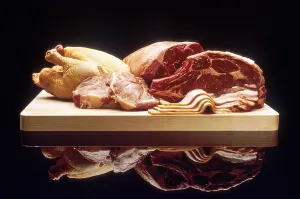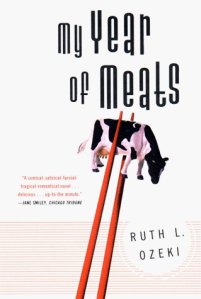SeaWorld is one of the premier aquatic theme parks in not only the United States but globally, as well. Opened in 1964, these theme parks make use of captive orcas, sea lions and dolphins in various types of shows and attractions. SeaWorld has also been known for its animal rescue and rehabilitation programs: programs that, since their inception, have saved around 22,000 animals from endangerment and extinction. However, these programs have brought a lot of criticism from wildlife groups all over the world such as Ric O’Barry’s Dolphin Project Inc. In the movie, The Cove, which showcases O’Barry and his followers’ attempts to stop the annual slaughter of almost 2, 000 dolphins in Taiji, Japan, the lives of dolphins in captivity are portrayed as sad and detrimental to the lives of one of the world’s smartest creatures. Confinement in captivity seriously compromises the welfare and survival of these animals by altering their behavior and causing extreme distress. From this movie, an example of participatory documentary, the world is able to see the truth behind dolphin slaughter as well as the secrets behind dolphinariums such as SeaWorld.
Ric O’Barry’s conviction throughout The Cove is that no dolphin can thrive in captivity, regardless of whether it was bred there, or caught in the wild in a drive. Dolphins are anatomically built for life in the open sea. They have very sensitive organs that detect small vibrations in the waves and can act like sonar, and it is sensitive enough to detect other sea life for miles away. It doesn’t make a difference where these animals come from – the wild or breeding centers – their bodies, sensory system, and nervous system are not built for small areas. They will never be able to be released in the wild. The Cove stresses that “dolphinariums”, such as SeaWorld, are responsible for buying live dolphins from the Japanese fishermen for use in their dolphin shows, aquariums, and swim-with-the-dolphin programs.

A typical dolphinarium show.
Though SeaWorld itself does not directly buy dolphins from Taiji distributers, O’Barry still believes that SeaWorld by keeping the dolphins in captivity, they are nevertheless killing them. Even though he was one of the founding fathers of the dolphin entertainment industry, he has changed his stance regarding their use and wants to end the use of dolphins, as well as other animals, in shows across the globe. He states, “I spent 10 years building that industry up, and I spent the last 35 trying to tear it down” when asked about his efforts to end the dolphinarium industry. He maintains throughout the film that it is not only the slaughter of the dolphins which he fights against but he also believes that “all of these captures help create the largest slaughter of dolphins on the planet” because whether dolphins are captured or not, their outlook is just as bleak being used as entertainment as being used for food.
Up until the 1980s, SeaWorld did in fact import whales from slaughter sites such as those in Taiji. It wasn’t until things like the Marine Mammal Protection Act and work by environmentalists in the early 1990s that finally curbed the importation of dolphins into the United States. However, as seen in The Cove, this has done little to curb the use of these animals in SeaWorld and other similar amusement parks in the US. Instead, dolphins are simply bred in captivity and never actually experience what it is like to be free and a real dolphin. “It’s the captivity industry that keeps this slaughter going by rewarding the fishermen for their bad behavior” and paying for the dolphins to be exported across the world as food and amusement. O’Barry shows through his film how SeaWorld and other aquatic entertainment centers refuse to criticize other facilities that buy animals from Taiji and have not taken any plans or moved in a direction to stop the hunts themselves.

A dolphin suffering from depression in captivity.
By using participatory documentary, we can see what it actually takes to make a dent in the capture and murder of dolphins. O’Barry’s chronicle of his groups attempt to be the first to document the slaughter of the dolphins in Taiji and document the outside forces which help continue these slaughters. We also get a sense of how situations in the film are affected or altered by his presence. He must disguise himself, shake the tails that companies put on him, and avoid pesky fishermen in order to achieve the goal of his film. The encounter between him and the subject becomes a critical element of the film and allows us to see into the actual battle that is being waged in Japan. He makes the film in a way that allows him to shape the issues according to his own sense of what is important, and controls how the audience sees the story as well. By participating and actually showing the changes that his persistence brings, he is able to better explain the predicament of the dolphins and allow for a larger backing of his cause by the audience. His admittance of his involvement in creating this problem and the pain that he feels for being a major cause of dolphin slaughter and capture, allows the audience to gain an emotional connection to the dolphins.
Overall, SeaWorld continues practices that O’Barry and The Cove aim to stop. We see that though they don’t directly support Taiji, their lack of work towards the prevention of these acts is apparent. For a company that is at the forefront of marine entertainment and “rescue”, they have not used their global influence as much as they should. They don’t take action because it could potentially hurt the multi-million dollar profits that they make every year. People don’t see what goes on behind the scenes after hours. The best way to end dolphin captivity for entertainment and general slaughter is through the education of the public about the dark side of that captivity and what it does to the health and lives of these captive ‘entertainers’. Thankfully, The Cove does its best to portray these problems best they can because without documentaries like this one, our global wildlife will suffer greatly. As stated in the film, “If we can’t stop that [dolphin capture and slaughter], if we can’t fix that, forget about the bigger issues. There’s no hope.”


















